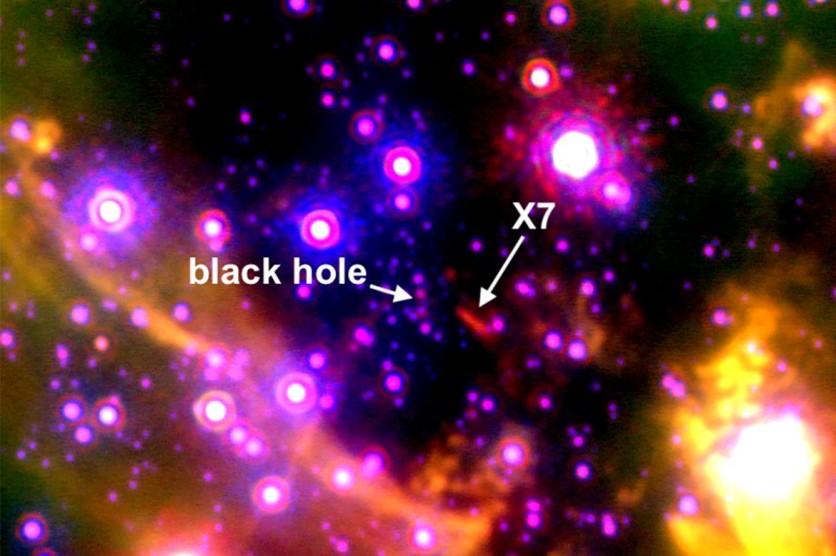Scientists have been seeing an elongated object called X7 near the supermassive black hole at the heart of the Milky Way for two decades now and they have been perplexed ever since.
But now, researchers from the UCLA Galactic Center Group and the Keck Observatory investigated the evolution of X7 using 20 years' worth of data obtained by the Galactic Center Orbit Initiative, and they suggest that it may be a cloud of dust and gas that was ejected during the collision of two stars.
They claim that as the black hole draws closer and applies its tidal force to the cloud, X7 has stretched over time and is now being torn apart.

Strange Object Near Sgr A*
Scientists predict that X7 will disintegrate within the next few decades, and the gas and dust it is made of will eventually be dragged toward the black hole known as Sagittarius A*, or Sgr A*.
"No other object in this region has shown such an extreme evolution," Anna Ciurlo, a UCLA assistant researcher and the study's lead author, said in a press release statement.
"It started off comet-shaped and people thought maybe it got that shape from stellar winds or jets of particles from the black hole. But as we followed it for 20 years we saw it becoming more elongated. Something must have put this cloud on its particular path with its particular orientation."
It would take 170 years for X7 to complete its orbit around Sgr A* and has a mass of about 50 Earths.
However, that might never occur. The team predicts that X7 will come closest to Sgr A* around the year 2036, then likely spiral toward Sgr A* and vanish based on its trajectory.
Powerful Tidal Forces
According to co-author Mark Morris, a professor of physics and astronomy at UCLA, the team believes that the powerful tidal forces generated by the galactic black hole would ultimately break X7 apart before it completes even one orbit.
The gravitational attraction known as tidal force causes an object to stretch as it gets closer to a black hole; the side closest to the black hole is tugged far more powerfully than the opposite end.
The weird dusty objects orbiting Sgr A* share several characteristics with X7. These "G objects" have a gaseous appearance but behave like stars. Yet, X7 has undergone a more significant change in shape and velocity than G objects.
Additionally, X7 is traveling quickly, clocking in at speeds of up to almost 700 miles per second as it races toward the black hole.
The discovery shows that X7 formed when two stars collided, even if its origin is still up for debate.
The research team will keep using the Keck Observatory to track X7's drastic changes as the black hole's gravity pulls it apart with increasing force.
The findings of the study were published in The Astrophysical Journal.
Related Article : Scientists Find Out More About This Supermassive Black Hole That Releases Mysterious Radiation

ⓒ 2025 TECHTIMES.com All rights reserved. Do not reproduce without permission.




